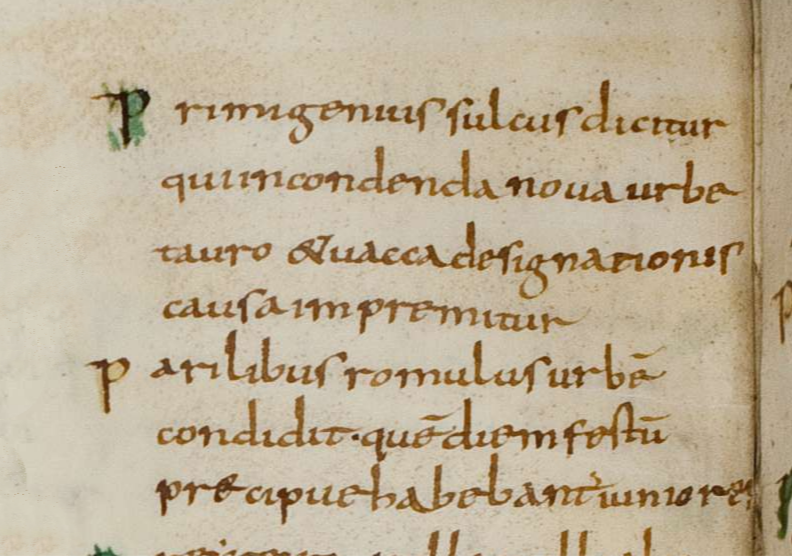Sibylline Books
- sulla80

- Sep 19, 2020
- 3 min read
Updated: Oct 8, 2023

The Sibylline books were consulted by Romans from the time of the republic through to the end of the Empire. The books were destroyed with the temple of Jupiter in 83 BC, but a copy was found and arbitrated. Augustus moved them to temple of Apollo in 12 BC. [Public Domain image, C. Comiers, "Pratique Curieuse", 1735]
There are many references to these books over time, here are just three for illustration. Livy writes of the books being consulted in 399 BC after bout of pestilence:
“As neither a cause nor a cure could be found for its fatal ravages, the senate ordered the Sibylline Books to be consulted.” - Livy 5.13
This resulted in a lectisternium being set up for the first time i.e. a couch (pulvinar) for images of the gods to recline with a meal served to them on a table. Suetonius reports that rumors about Julius Caesar’s desires to be king were fueled by a Sibylline prophesy.
“it was written in the books of fate that the Parthians could be conquered only by a king” -Suetonius, Julius Caesar, 79.3
Marcellinus writes that Julian the Apostate consulted the books before marching against the Sassanids in AD 363.
“Just at that time it was reported to him by letter, that at Rome the Sibylline books had been consulted about this war, as he had ordered, and had given the definite reply that the emperor must not that year leave his frontiers.” -Marcellinus, XXIII.1.7
Where did these books come from? According to Roman tradition, they came from the Sibyl of Cumae who got them from Erythrae, and they came there from Gergis. Pausanias tells of the Sibyl named Herophile who lived in Samos and known to the inhabitants of Marpessus, a village near Gergis. This "Trojan Sibyl" is the source of the books that eventually made their way to Rome.
The Sibylline books come to Rome
Lucius Tarquinus Superbus was the legendary 7th king of Rome, who was eventually overthrown and replaced with two consuls. According to the account of Gellius the Cumaean Sibyl offered the books three time to King Tarquin for a high price. After each refusal she burned 3 of the 9 books, so that King Tarquin finally relented and bought the last 3 for the original full price.
Sibylline Oracles
The initial (public domain) image in this post is from C. Comiers, "Pratique Curieuse", 1735. The Sibylline Oracles are not the Sybilline Books of Rome:
"A collection of Apocalyptic writings, composed in imitation of the heathen Sibylline books by the Jews and, later, by the Christians in their efforts to win the heathen world to their faith. The fact that they copied the form in which the heathen revelations were conveyed (Greek hexameter verses) and the Homeric language is evidence of a degree of external Hellenization, which is an important fact in the history of post-exilic Judaism. Such was the activity of these Jewish and Christian missionaries that their imitations have swamped the originals."
The Roman Sibylline Books prescribe solutions to avoid calamity, while the Sibylline Oracles predict disaster. Josephus references these ORACLES in describing the Tower of Babylon:
"The Sibyll also makes mention of this tower, and of the confusion of the language when she says thus: “When all men were of one language, some of them built an high tower, as if they would thereby ascend up to heaven. But the Gods sent storms of wind, and overthrew the tower, and gave every one his peculiar language. And for this reason it was that the city was called Babylon.”
-Josephus, Antiquities of the Jews — Book I 4.3
Where is Gergis?
Gergis, Troas is in the Northwestern corner of what is today modern Türkiye, that juts into the Aegean Sea.

CC image linked from Corpus Nummorum
And the coin?
The coin is from the original location of the Sibylline books. I find this coin a challenge to photograph. While not completely dissatisfied with the result, it is one that I will say is nicer in hand. Perhaps this is the result of the magnification on a small coin like this and too much glare from the lighting.

Troas, Gergis, circa 350-300 BC, Æ (12mm, 1.72g, 6h)
Obv: Head of Sibyl Herophile facing slightly right, wearing laurel wreath and pendant necklace
Rev: Sphinx seated right, ΓEP downwards to right
Ref: Corpus Num 24374; Traite des Monnaies Plate CLXVI.14



Comments